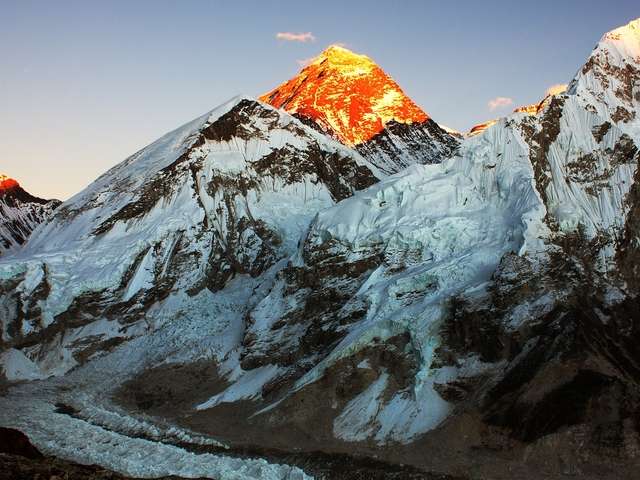
For those already planning to trek Kilimanjaro, adding the second highest mountain in Tanzania and the fifth highest mountain in Africa to your itinerary without going far out of your way is a no brainer. Strategically speaking, trekking Meru before summiting Kilimanjaro can be a great way to acclimate before summiting the tallest peak in Africa. It is also one of the most spectacular treks in East Africa, with stunning sunrise views of Kilimanjaro from the crater’s ridge, lush rainforests, cascading waterfalls and a diverse throng of wildlife. Keep reading to discover why trekking Mt. Meru is a must do when in Tanzania.
Improve Acclimation
Kilimajaro’s younger brother is often trekked as a precursor to it’s larger sister, Kilimanjaro, as an acclimation tool. The longer a period you give your body to adjust to high altitude the less likely you will be to develop altitude sickness, which can be very dangerous and life threatening. As the summit of Mt Meru (14,980ft) is at the height of Kilimanjaro’s two highest camps, it is a great way to spend more time at altitude and make your Kilimanjaro trek that much more comfortable. To do this you need to trek them back to back, start your Kilimanjaro trek the next morning or the morning after descending Meru. If you do not summit one right after the other, summiting Meru will not advantage you in your acclimation to Kilimanjaro.
Though acclimating this way can help significantly, one should not then attempt to climb Kilimanjaro aggressively. On such a difficult trek that would never be advised; always stick to the tried and true method of ‘pole pole’ translating to ‘slowly slowly’. Those that summit Meru, then Kilimanjaro, and follow the advice of their guides rarely struggle on summit night of Kilimanjaro. Lastly, it should be advised not to underestimate how difficult the Mt Meru trek is. Though it’s a shorter trek at a lower altitude it is still intense and challenging. Not to mention it is steeper than most Kilimanjaro routes. Proper training and preparation is key to a successful trek.
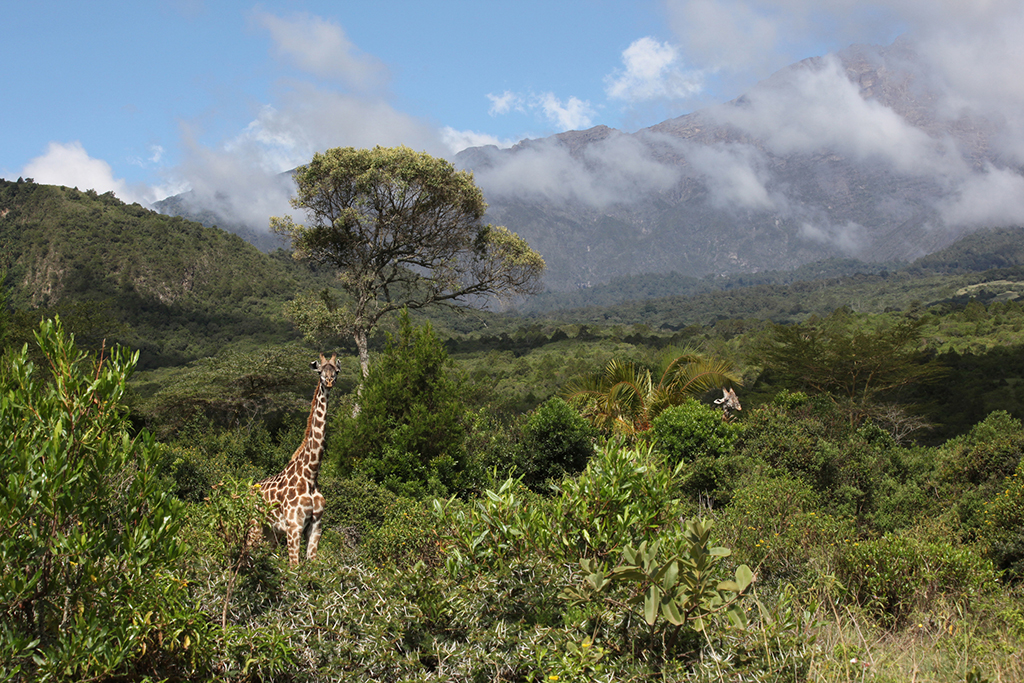
Jaw Dropping Biodiversity
Receiving less visitors than Kilimanjaro or Mt. Kenya, the pristine forests of Mt Meru have been left undisturbed and are teeming with animals. Mt Meru is based inside of Arusha National Park, home to the world’s largest population of giraffes with vast grasslands supporting buffaloes, zebras, elephants, antelopes and warthogs. Your likelihood to encounter many of this diverse mountain ecosystem’s large wildlife is high. This is why the country requires trekkers to be accompanied by an armed guide. After hiking out of the savannas keep an eye out for birds such as falcons, hornbills, cuckoos and eagles perching above you. Baboons, blue monkeys, as well as black-and-white colobus monkeys also occupy the canopies above. Amphibians and reptiles too can be found by those with a sharp eye; from frogs, chameleons, and tortoises to green mambas and pythons. Though less frequently seen, nocturnal mammals such as leopards and porcupines live on the mountainside as well. With so many colorful and wild animals inhabiting its slopes, trekking Meru is a thrilling dive into the animal kingdom.
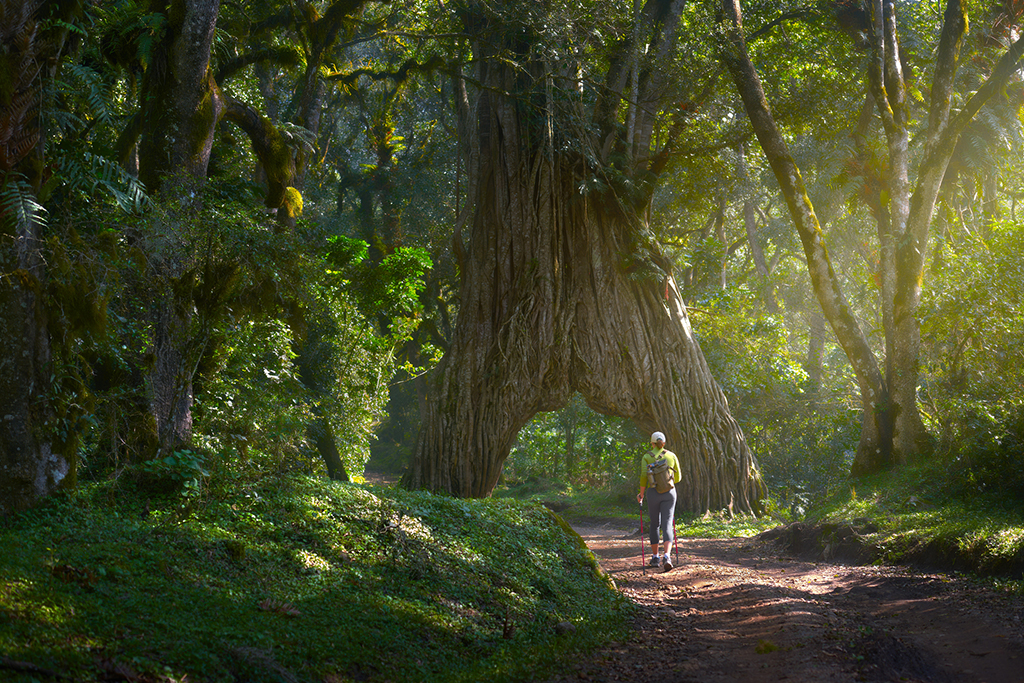
Stunning Flora
As a dormant volcano, the soil of Meru is fertile and rich with nutrients. Within the lower forests fruit such as wild mangoes, African olives and even figs can be found. It’s not surprising that the nectar of wild orchids, lilies and violets support a flourishing butterfly population and give the forest a sweet fragrance. On the first day you will encounter the famous Arched Fig Tree that has formed a natural tunnel wide enough for an elephant or a car to pass through. Further up the mountain in the heather zone, giant groundsel and lobelias, similar to those found on Kilimanjaro, can be found. The last vegetation zone turns into craggy alpine desert with scattered tufts of grass as you approach the summit. For those that have an interest in ecology, ascending through Mt Meru’s vegetation zones will certainly blow you away.
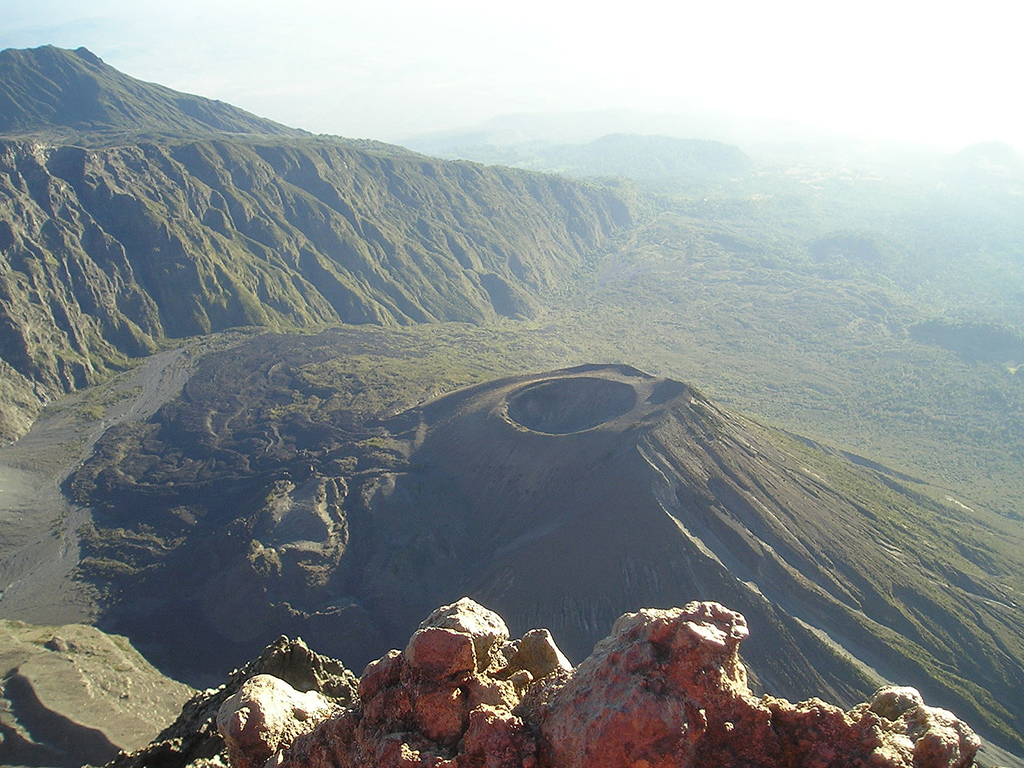
East Africa’s Most Scenic Trek
On the ascent there’s a lot of interesting things to see from old huts to a series of waterfalls hidden in the tropical forest. You’ll continue the climb upwards through picturesque glades and forests. And upon reaching Kitoto Camp, the stunning momella lakes are visible in the valley below you. Higher up the mountain at Rhino Point when there are no clouds you might also be able to see the inner crater walls’ steep cliffs and Meru’s summit. However, the best views on the mountain are from the atop the horseshoe rim. It’s a combination of the most exhilarating and beautiful trekking in East Africa as you make your way across the sheer ridgeline Looking down into the crater, the ash cone is visible a thousand meters below. As Meru is located 70 kilometers west of Kilimanjaro, the entire Eastern horizon is filled with it’s vast expanse. December to February offer cloudless blue skies that showcase Kilimanjaro with stunning clarity. On the other side of the crescent, outside the green plains of Arusha national park lies the city of Arusha, easily spotted in early morning ascents by it’s lights. After taking in the views of Little Meru to the North of the summit, enjoy mesmerizing views of Kilimanjaro on the descent. This unspoilt trekking paradise is certainly one of Tanzania’s best kept secrets.
Escape The Crowds
Kilimanjaro has an estimated 35-50,000 people attempting to summit it every year; to put that in perspective, it’s an average of 170-200 new people starting at the base of the mountain during the climbing months. Due to Kilimanjaro’s popularity it’s even possible to encounter “traffic jams” on its busier routes. Compared to this madhouse of tourists, Mt Meru is a peaceful island of serenity. Due to the smaller crowds, it is also less commercialized and the trails huts are in better condition. Escaping the crowds alone is the main reason many hikers that have summited both mountains prefer Meru to Kili.
Expert Team
On both mountains you will be pushed to your limits, beyond what you thought you were physically and mentally capable of. When climbing up thousands of meters in altitude, it’s important to know you’ve got an experienced, quick thinking, and dedicated support team guiding you. As it’s required that you have guides on the mountains, the only decision left to make is the quality of team you want with you on the mountain for a week. Our guides have endless enthusiasm to motivate trekkers and provide memorable experiences you’ll remember for a lifetime. Each with over 100 successful summits, Wilderness First Aid certification, intimate knowledge of the mountain, they create a safe and enjoyable trekking environment. Enjoy limitless stories of the mountain and local cultures while filling days with reggaeton while making lifelong friends.
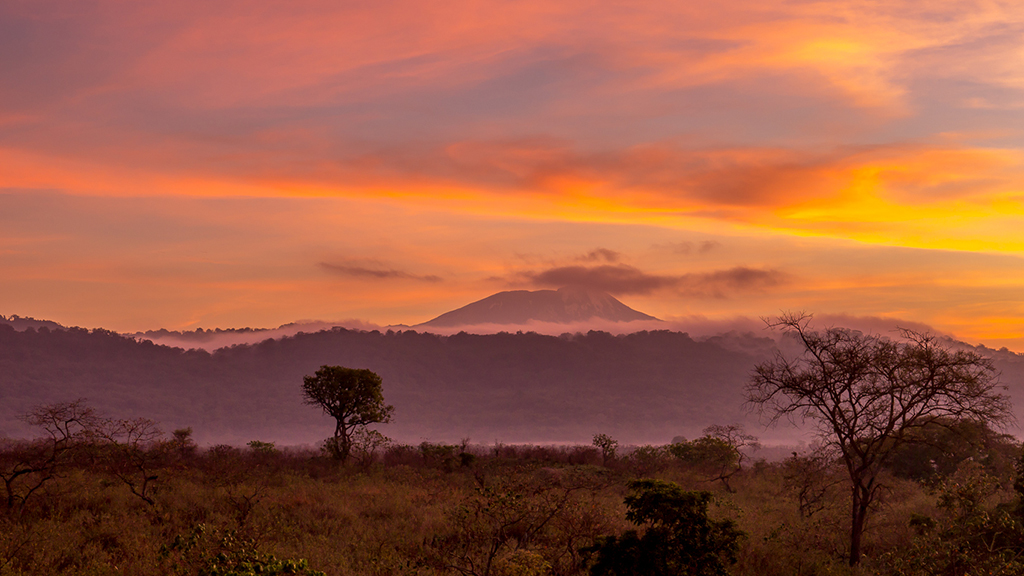
About The Trek
The summit of Mt Meru, known as Sociallist Peak, lies at 4,980 ft and takes 3-4 days to reach via the Momella Route. Though there were previously other routes via the northern side, Momella (on the East) is now the only legal way to climb the mountain. The route starts through Momella gate and continues through mountainside coffee farmlands before winding upwards into Meru’s sunken crater. Visitors spend each night in a mountain hut; starting first with Miriakamba Hut and then Saddle Hut before summiting the peak and descending. Overall it is a more peaceful and affordable alternative to Kilimanjaro with impressive crater views.
See the Details: Mount Meru 3 Day Climb
There are many good reasons to climb Meru, certainly more than we’ve listed here. Considering the spectacular views, the amazing biodiversity and our great team, you’ll no doubt enjoy trekking this beautiful peak! Whether taken as a standalone adventure or trekked in conjunction with Kilimanjaro, we can guarantee that this journey is not one you’d regret making! We hope this article was helpful and would love to aid in planning your trip. Don’t hesitate to reach out! Please like, comment, and subscribe to our mailing list to let us know how we’re doing.








